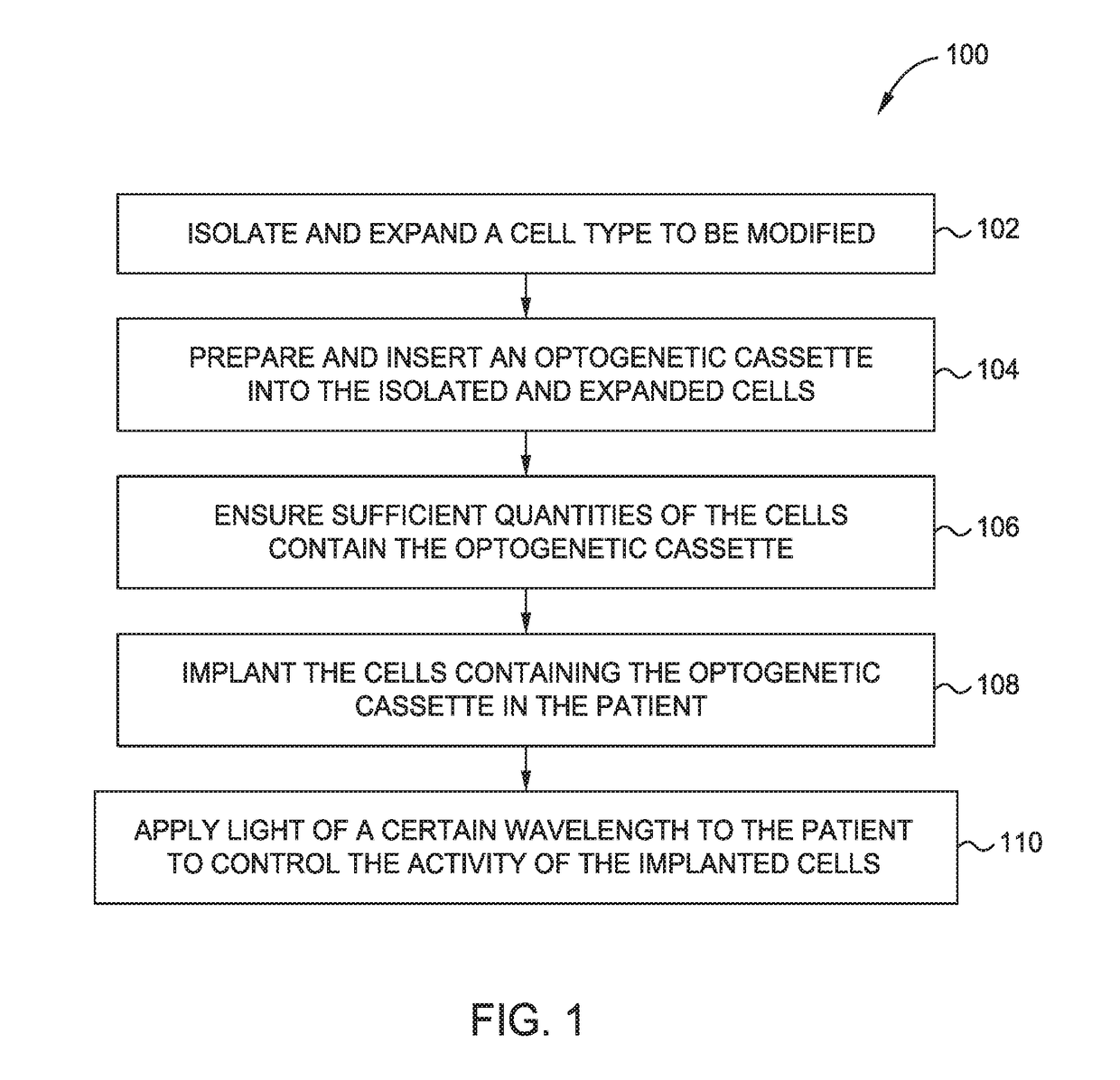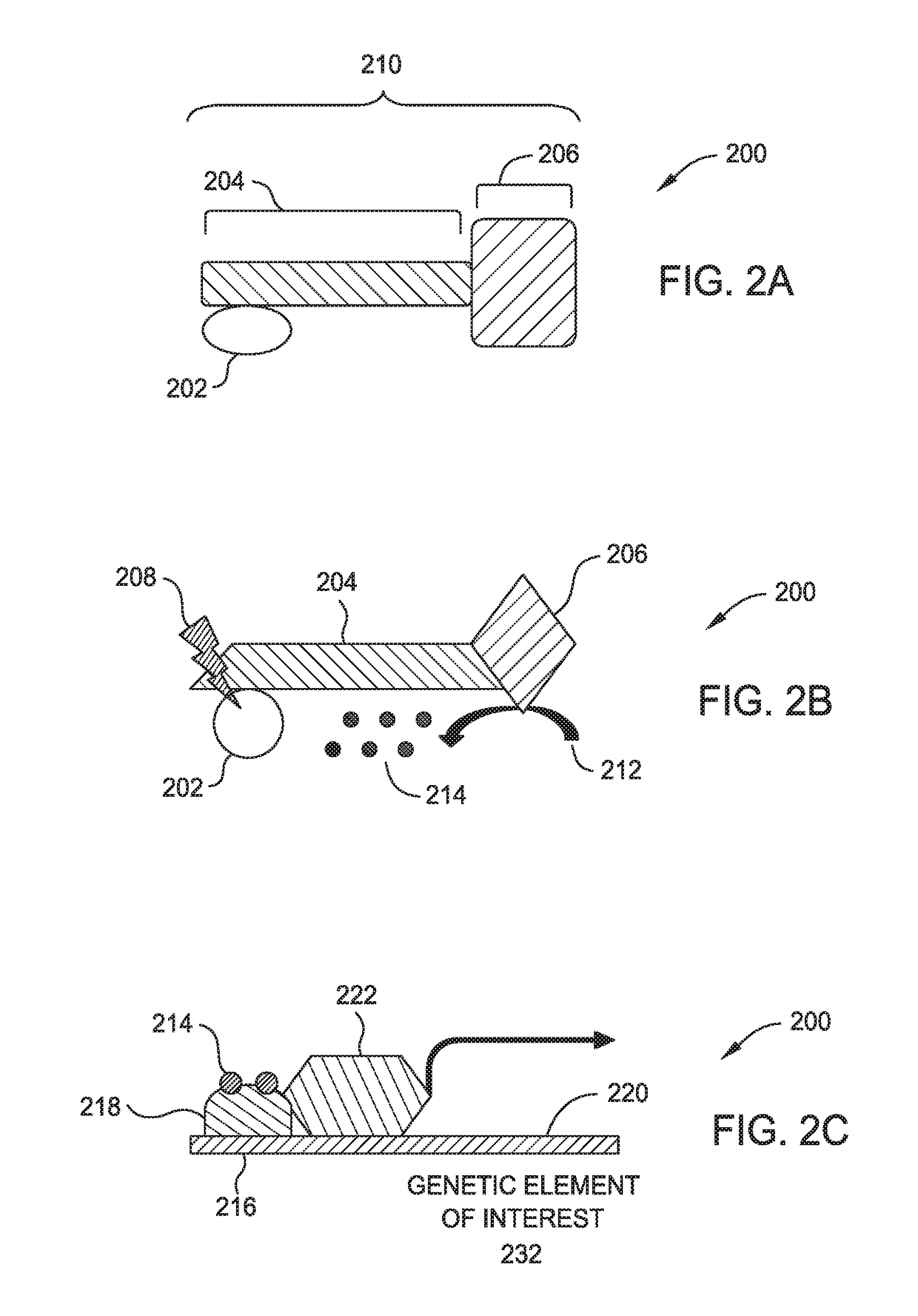Localized immunosuppression via optogenetically controlled cells
a technology of optogenetically controlled cells and immunosuppression, which is applied in the field of immunosuppression, can solve the problems of putting patients at increased risk of contracting infectious diseases, unable to be beneficial to patients, and unable to achieve the effect of reducing the risk of infection, and increasing the activity of enzymes
- Summary
- Abstract
- Description
- Claims
- Application Information
AI Technical Summary
Benefits of technology
Problems solved by technology
Method used
Image
Examples
Embodiment Construction
[0015]Embodiments described herein relate to suppressing the immune response locally within tissue allografts such as vascularized composite allografts (VCAs), and certain illnesses improperly affecting the immune system using optogenetically controlled immunosuppressive cells. More specifically, embodiments described herein provide for localized immunosuppression surrounding tissue allografts, such as VCAs, and illness locations as an alternative to systemically suppressing a patient's entire immune system. Methods include localized implantation of optogenetically modified immunosuppressive cells that are configured to express one or more genetic elements in response to exposure of certain wavelengths of light.
[0016]Localized immunosuppression is defined herein as non-systemic immunosuppression where the entirety or majority of the immune suppression is taking place at a specific body location or locations rather than being distributed throughout the entire body. More specifically,...
PUM
| Property | Measurement | Unit |
|---|---|---|
| wavelengths | aaaaa | aaaaa |
| wavelengths | aaaaa | aaaaa |
| wavelengths | aaaaa | aaaaa |
Abstract
Description
Claims
Application Information
 Login to View More
Login to View More - R&D
- Intellectual Property
- Life Sciences
- Materials
- Tech Scout
- Unparalleled Data Quality
- Higher Quality Content
- 60% Fewer Hallucinations
Browse by: Latest US Patents, China's latest patents, Technical Efficacy Thesaurus, Application Domain, Technology Topic, Popular Technical Reports.
© 2025 PatSnap. All rights reserved.Legal|Privacy policy|Modern Slavery Act Transparency Statement|Sitemap|About US| Contact US: help@patsnap.com



